David, our Chairman, wrote to the King on behalf of the Trust to let him know about our campaign to raise funds to buy Bardsey Fields and this is the reply that we received.
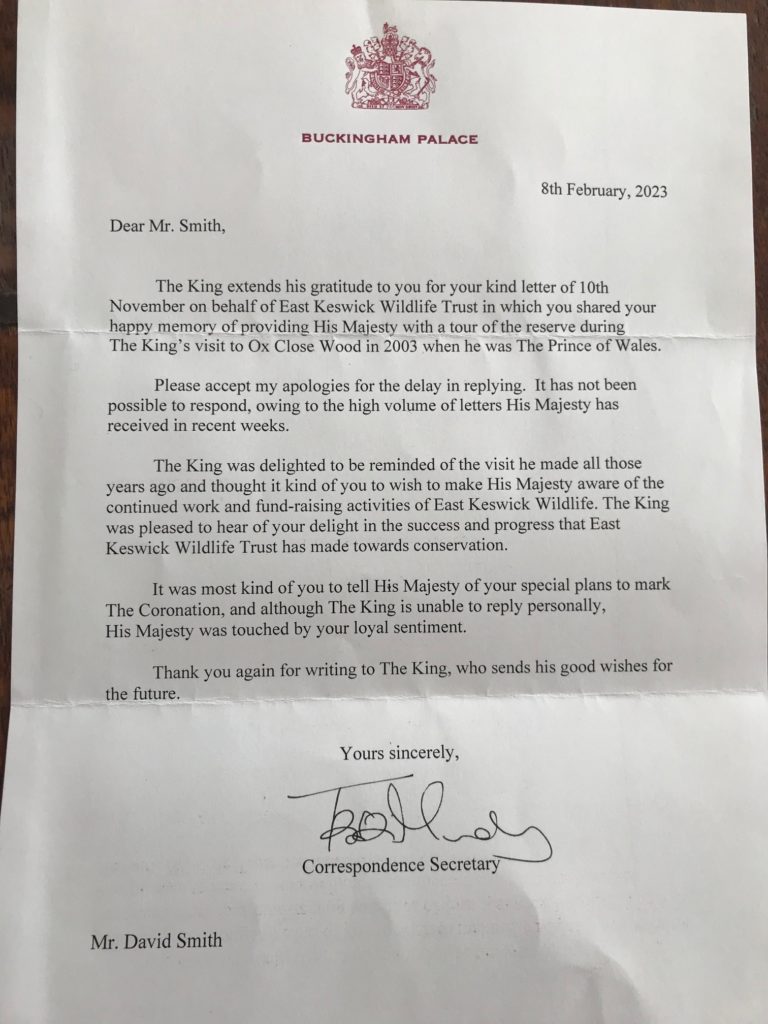
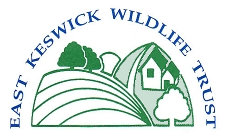

The winter bird survey took place on 14th January 2023. A total of 36 different bird species were observed during the walk from St Mary Magdalene Church on Moor Lane, through the Marsh and then along Moor Lane. We then crossed Harewood Road and walked along by the river, up Fitts Lane and back into the village.
Bird species observed
| Blackcap | Wren |
| Goldcrest | Robin |
| Greenfinch | Goldfinch |
| Bullfinch | House Sparrow |
| Dunnock | Starling |
| Blackbird | Song Thrush |
| Redwing | Fieldfare |
| Blue Tit | Great Tit |
| Long-tailed Tit | Willow/Marsh Tit |
| Magpie | Jackdaw |
| Rook | Crow |
| Pheasant | Red Kite |
| Sparrowhawk | Buzzard |
| Wood Pigeon | Rock/Feral Dove |
| Greater-spotted Woodpecker | Heron |
| Greylag Goose | Canada Goose |
| Mallard | Black-headed Gull |
| Herring Gull | Cormorant |
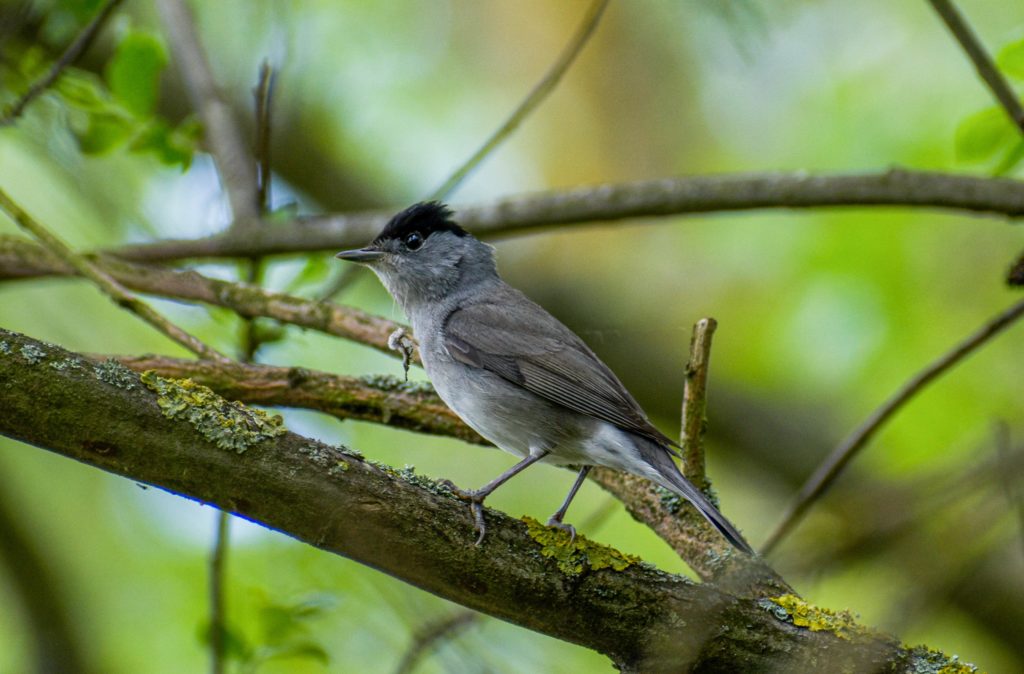
Our winter walk is to The Scotts Arms in Sicklinghall.
If you would like to join us, please email info@ekwt.org.uk as we will need numbers to book lunch.
Please meet in the Crabtree Lane car park, East Keswick at 10am.
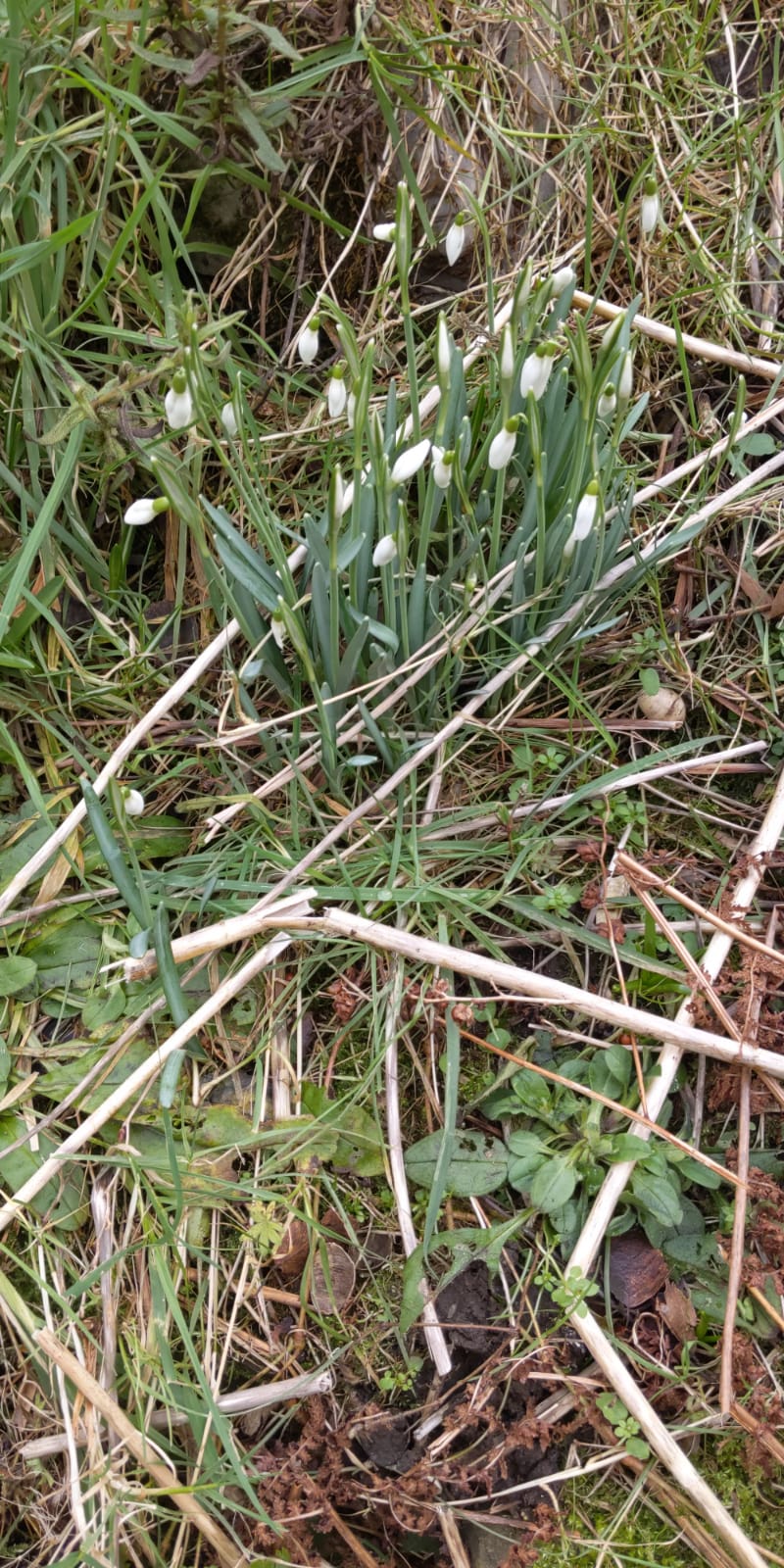
This event will be weather dependent.
We will be meeting at the entrance to St Mary Magdalene Church, Moor Lane, East Keswick at 10.00am. You are welcome to come and go throughout the day, please bring snacks and lunch, also binoculars if you have them. From the Church we will be walking through the Marsh, then along Moor Lane to the cricket field. We will then cross Harewood Road and walk down to the river, back up Fitts Lane and into the village. If time allows we may also include Ox Close Wood.
We are still looking for donations to support our purchase of Bardsey Fields, to cover additional costs such as legal fees.
Donations can be given through our bank, please follow the link above for details.
Your support has been amazing, this is the final push to achieve our goal!
We are delighted to let you know that our fundraising campaign has been a huge success and we raised a phenomenal amount of money in less than 3 weeks, enabling us to acquire Lot 2, totalling almost 24 acres of land in the centre of Bardsey village. The land runs from Bardsey Primary School down to Bardsey beck and beyond.
Unfortunately, however, we only raised sufficient funds to bid on one piece of land and prioritised the lower field, to the front of the school for a number of reasons. Firstly, we understood this to be the plot that we would most likely be successful with. Secondly, it is the plot with the best habitat, and it is the land which is very much in the centre of the community.
We are unable to share how much we bid as this information is confidential, but we can confirm that all donations received were used to secure this land.
We sincerely thank all those who donated to save Bardsey Fields – we couldn’t have done it without you!
If you have made a donation, please ensure you have completed a Gift Aid form, which enables us to claim back 25p for every £1 donated. You will find the form on this website in the Bardsey Fields Campaign, Donate section, or contact us at fundraising@ekwt.org.uk and we will send one to you.
The Trustees
East Keswick Wildlife Trust
Once widespread, this plant is now very rare with over 99% of its population found on just 5 sites in the United Kingdom. The plant is small and can be inconspicuous except when it flowers in Spring around Easter time, hence the name Pasque flower, Pulsatilla Vulgaris.
The Pasque flower was thought to be lost in Yorkshire, until in 1984 a single plant was discovered in a heavily grazed grassland near Leeds. English Nature took over the lease of the site and work was done to increase the population, but this was unsuccessful, and the viability of the plants seed questioned.
How East Keswick Wildlife Trust became involved
In 2016 East Keswick Wildlife Trust were contacted by a senior officer from Natural England who suggested that we take on the project to help save the plant from extinction in Yorkshire. He knew of East Keswick Wildlife Trust’s successful conservation projects and developing expertise and success in germinating uncommon native wild plant species.
The Trust initially took 2 seeds from the plant and proved their viability by propagating 2 healthy plants which were then protected and kept safe in East Keswick. In 2019, East Keswick Wildlife Trust put together a project team and applied for a 5-year license from Natural England to secure the Pasque flower’s future in Yorkshire. The license was approved, and seed collected, with some deposited at the Millenium seed bank at Kew.
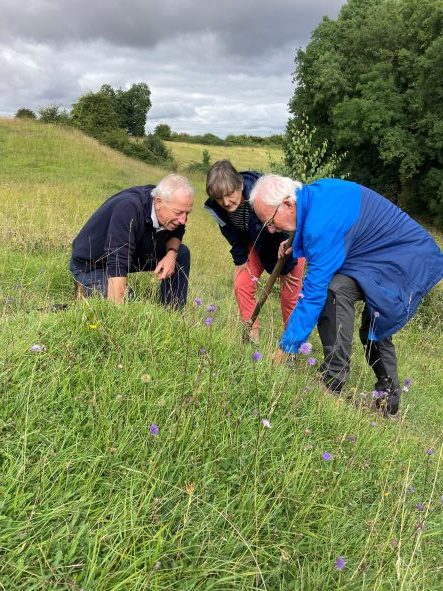
A resounding success
We continue to nurture more seedlings with a view to plug planting them in the future and consider this project to be a resounding success.
Please follow the link below to watch a short film by the Natural History Museum about this lovely flower
We use Dexter cows to conservation graze on our reserves. Dexter cows are a small very hardy breed that are very efficient grazers.
Advantages of this type of grazing are:
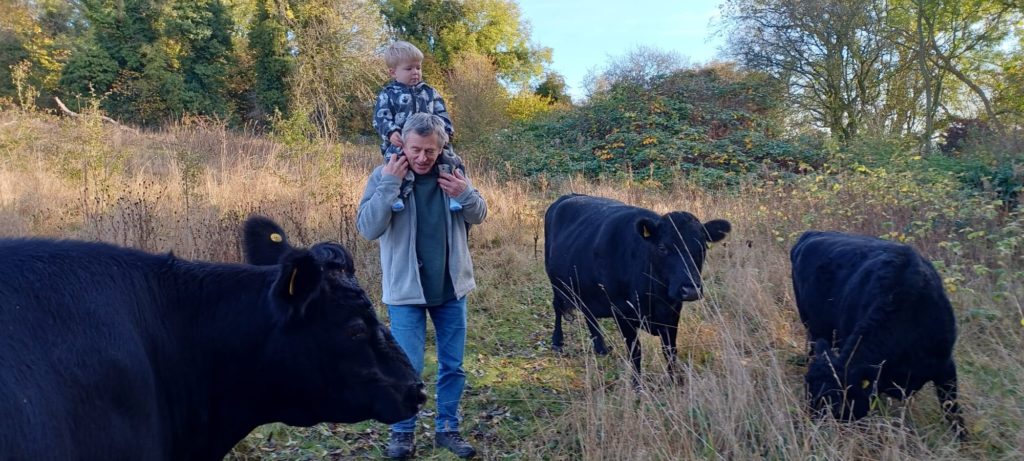
On 29th and 30th October Ann Hanson and colleagues from the Yorkshire Mammal Group joined East Keswick Wildlife Trust to survey Fitts Fields for small mammals. 50 humane large Longworth traps were set on the Saturday evening and on Sunday morning we met to open the traps.
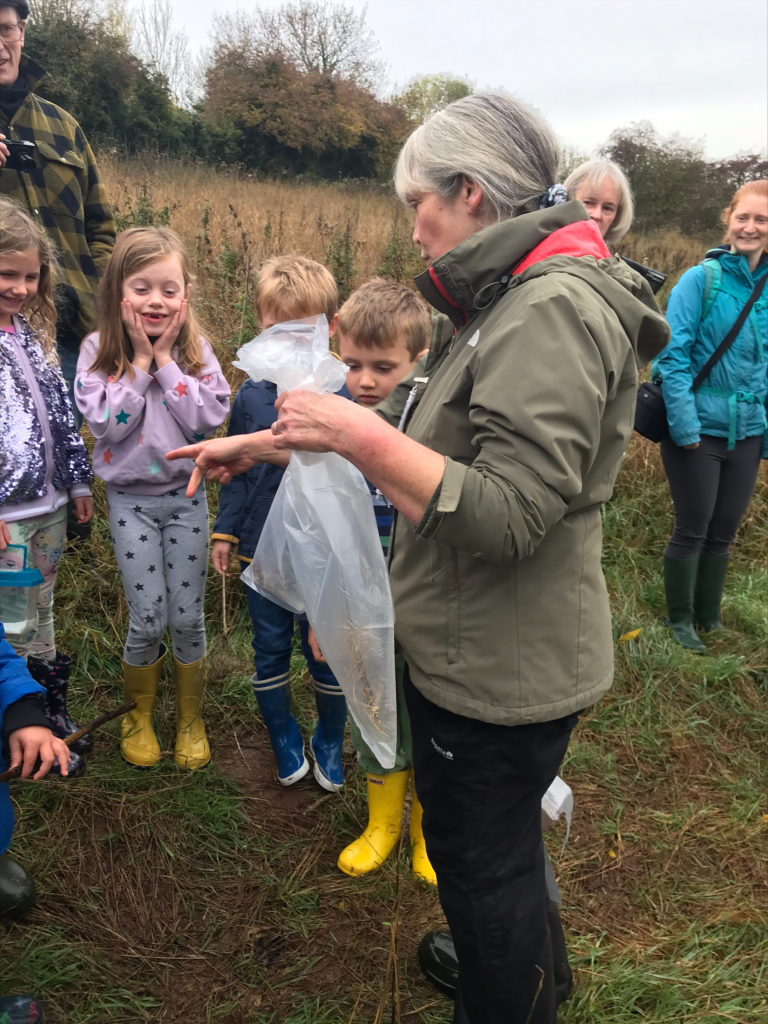
32 of the 50 traps had small mammals in them, all looked healthy and were a good weight.
We recorded: 14 bank voles, 3 field voles, 14 wood mice and 1 common shrew.
This shows that there is a very good population of small mammals in these fields and although we did not find a harvest mouse this time, we do know that they are living here.